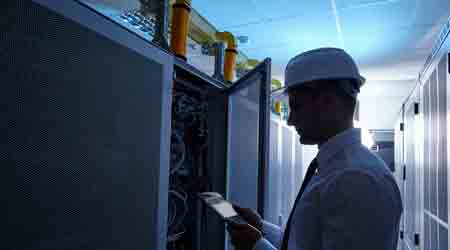Challenges of Implementing Mobile Maintenance Management Software
We asked mobile CMMS developers about the challenges maintenance and engineering departments in institutional and commercial facilities face when implementing the technology.
Here are their responses:
Jeff Thompson, co-founder and executive director, AwareManager: “Making the move to mobile means you’re fundamentally changing how staff members have done their jobs for years, and change is always hard. At the end of the day, if the staff doesn’t actually use the mobile technology you’ve invested in, you won’t reap any of the benefits you expected.”
“To make users comfortable with the new process and technology, keep the mobile application simple. An engineer only really cares about the work assigned to him or his team, so he should not have to have filter through an overwhelming view of every single work order just to find the work assigned to him. Another tip is to allow users to pick their own devices or use what they already own. That way, they don’t need to learn how to use a new operating system in addition to the new facility management application.”
“The goal should be to make your staff’s lives easier, not more complicated.”
Margeaux Girardin, marketing coordinator, Hippo CMMS: “There are two primary challenges of implementing mobile CMMS technology: lack of software adoption by staff or technicians and slow app connections or Wi-Fi challenges.”
“As more and more organizations understand the importance of mobile technology in the workplace, the digitization of common paper-based processes has occurred. Some users adopt mobile technology quickly and painlessly, understanding the many benefits it offers. On the other hand, some users — particularly those of older generations — are not as familiar with mobile technology, viewing these processes as difficult or as a disruption to their trusted manual ways. A CMMS is only as good as the quality of data that is inputted. If users can’t get over the learning curve, they won’t be inclined to use mobile technology, thus reducing the data to be tracked and software effectiveness.”
“The second primary challenge when implementing mobile is the possibility of a slow connection or being unable to access Wi-Fi in areas around the facility. Much of maintenance work is done in remote facility locations or dead zones where there can be little to no Internet connection. Maintenance data may slow to display or inputted data might be unable to save. Native mobile solutions and understanding possible dead zones in your facility are important factors when considering mobile.”
Susan Spring, senior director of customer success, Corrigo Inc.: “The app and the hardware both need to be appropriate for the field environment. A mobile website only works if you have a continuous data connection, and data loss in the field can be a real time waster. If they’ve been burned by ‘log in through this mobile website’ approaches to mobility, some FM teams can get pretty cynical about going mobile.”
“We find that the right process to get people set up and introduced to the app makes all the difference. A good, native mobile app preserves your data if you lose connectivity, while still providing real time data as long as your connection works. Once the team sees that, it’s easier for them to trust the app.”
“The right device also helps. We have partnered with a handset manufacturer who makes rugged devices that can be dropped in water, stepped on, take much more abuse than your typical iPhone, yet keep on working.”
“We are often asked about asset labeling for mobile scanning (barcode, QR code, etc.), and have developed best practices with our clients that facilitate that step. It saves a lot of typing, which is a win for everyone.”
Heather Wilkinson, marketing coordinator, Mapcon Technologies: “A few years back, the biggest challenge with implementing a mobile CMMS was definitely getting people to actually use a mobile device. These days, it seems like everyone has one and no one is able to stop using it. Another issue that used to be prevalent but isn’t as much anymore is Wi-Fi availability. Up until recently, many facilities didn’t really have Wi-Fi. Now, it’s almost a necessity.”
“The problem that we see now during our training classes is that people are resistant to change. If a plant has used a desktop version of CMMS software for years, many workers aren’t pleased about learning how to use it on a mobile device. This is especially true of companies with an older population. This creates a problem because different generations will accept the technology differently. The younger generation is generally onboard and more likely to start using a mobile CMMS right away than the older generation. Until the older workers get the proper training and get used to the new technology, they can sometimes be stuck in their old ways and insist on using the desktop program, which can cause issues during the transition. If one generation is still using the desktop and the other is already using the mobile app, this can cause confusion. As time goes on and more millennials are joining the manufacturing world, this problem will eventually be resolved on its own.”
Paul Lachance, president and CTO, Smartware Group Inc.: “The primary challenge we see today involves the desire of organizations to attempt to replace their entire CMMS with a mobile solution. It’s simply not meant for this purpose currently, as large volumes of data can’t be entered easily, screen sizes limit visibility to complex drawings and images and many lines items of data, and other reasons. Mobile applications are intended to allow maintenance professionals to move seamlessly between their desktop and smartphones, tablets, and other mobile devices. Another challenge revolves around the inclusion of a mobile strategy well after a CMMS implementation. It is far more ideal to include your mobile strategy during the early stages of your implementation consulting project, in order to best align your overall goals and objectives.”
Related Topics:












